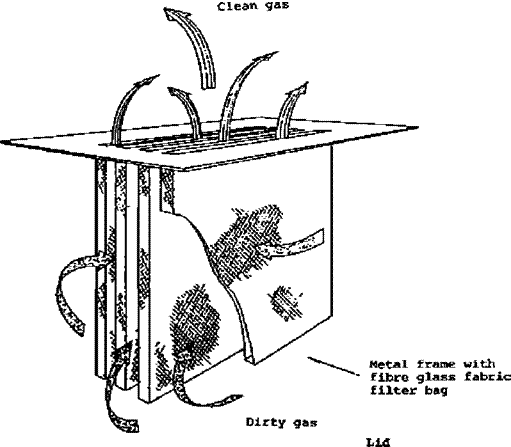 Conversion of diesel engines to producer gas operation
Conversion of diesel engines to producer gas operation
a) Conversion to spark ignition
Detailed studies of conversion of two diesel engines from Swedish manufacturers, Volvo and Bolinder-Munktell, to spark ignition for operation on straight producer gas were carried out in 1957-1963 and have been reported by Nordstrom (33).
The modifications included replacement of the cylinder head to allow fitting of spark plugs, replacement of the injection pump by a distributor, and use of special producer gas pistons giving a lower compression ratio. Different shapes of the combustion chamber were tested on one of the engines.
Table 3.5 gives a summary of leading data and performance of the two engines studied. The conversion cost for the engine only, recalculated to the 1984 US dollar rate was found to be about 40 — 50 $/kW. I
|
Engine type |
Volvo D47 |
Bolinder-Munktell BM 1113 |
|
lo. of cylinders |
6 |
3 |
|
Displacement volume dm3 |
4.7 |
3.78 |
|
.Cylinder diameter mm |
95 |
111 |
|
Stroke length mm |
110 |
130 |
|
Diesel operation |
||
|
.Compression ratio |
17.1 |
16.5:1 |
|
iVlax power kW |
71 |
42 |
|
rpm at max power |
2800 |
2200 |
|
Producer qas operation |
||
|
Compression ratio |
7.6:1 |
10:1 |
|
і УІах power kW |
34 |
19.6 |
|
rpm at max power |
2200 |
2200 |
|
Power output relative to straight diesel operation at different speeds |
||
|
rpm |
||
|
300 |
20% |
12% |
|
1500 |
31 |
18 |
|
2000 |
38 |
21 1/ |
|
2500 |
45 |
|
1/ The efficiency is surprisingly low compared to the reported maximum power output at 2200 rpm |


 |
Filter box Ash tray
b) Dual fuelling of pre-chamber and swirl chamber diesel engines
Tests with dual fuel operation of one pre-chamber and one swirl chamber diesel engine have been reported by Nordstrom (33). The tests indicate that these engines are not suitable for dual fuel operation, since too early ignition of the gas/air mixture, leading to diesel-knocking, will occur unless the load is fairly low or the gas/air mixture is clean, leading to a moderate diesel oil substitution.
c) Dual fuelling of direct injection engines
Studies of the performance of direct injection diesel engines operated in a dual fuel mode with a minimum diesel oil injection, have been carried out at the National Swedish Testing Institute for Agricultural Machinery. The tests are still going on. A list of the tested vehicles is given in Tables 3.10 and 3.11.
The experience is that the modifications required are generally simple and limited to:
— installation of a control lever for obtaining low injection quantities and maintaining the possibility for normal injection by straight diesel operation;
— modification of the injection pump to provide suitable injection characteristics (constant injection per stroke at varying engine speed);
— advancing the injection timing.
The direct injection engines will normally operate well in dual fuel mode with a compression ratio of 1:16 to 1:16.5. Diesel knocking may occur in some cases. The compression ratio must then be reduced by use of double cylinder head gaskets. The reduction of the injection amount is accomplished for in-line pumps by mechanically constraining the movement of the control rod.
Suitable injection characteristics for such pumps are obtained by use of a specially designed delivery valve, see Nordstrom (33). For distributor pumps, the flow is reduced by adjustment of the metering valve. Distributor pumps may suffer from inadequate cooling and lubrication if the injection flow is reduced since there will be a very small supply of cold fuel to the pump. This can be remedied by leading the excess flow from the pump to the fuel tank rather than recirculating it to the filter, see Fig. 3.7. Depending on the injector design it may be necessary to modify the mounting of the injectors or to replace the injectors in order to avoid coking as a result of high injector temperature caused by the low injection flow. An example of such modification is given in section 3.2.2.
The studies of the effects of injection timing on power output indicate that the injection timing is not very important for engine speeds below 1200 rpm, and that advancing the injection timing grows more important as the speed increases. Injection advancement beyond 35 — 40° was observed to give pressure fluctuations.- Compromises between maximum power at high rpm and disturbance free combustion at low rpm may be necessary. It is recommended that the injection timing setting for dual fuel operation be determined by bench-tests for each type of engine.
Table 3.6 shows examples of performance data determined in laboratory tests for two direct injection engines operated on dual fuel. The full power efficiency of the engines is about 35 percent. The diesel oil substitution is between 80 percent and 90 percent.
The power loss in dual fuel operation was found to be 10 — 38 percent, see Tables 3.10 and 3.11.